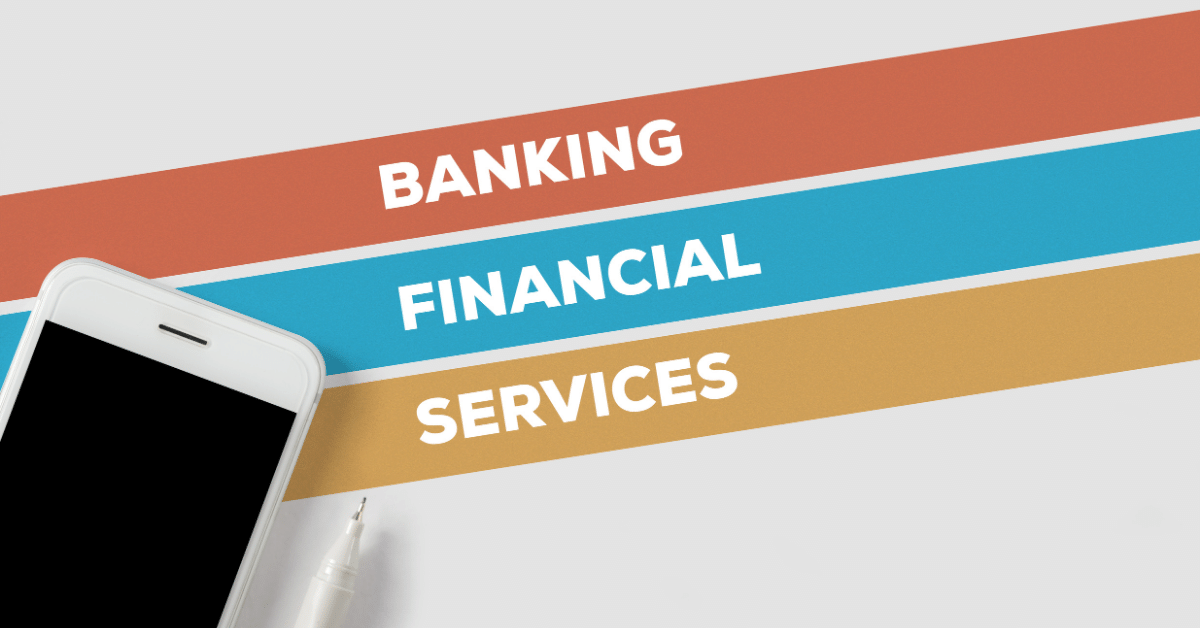Cross-selling in banking industry happens when a bank associate attempts to market to an existing client additional financial items. Examples of some products provided during the cross-selling procedure are debit cards, certificates of deposit (CD), vehicle finances, or investment solutions.Significance of Cross-Selling: Cross-selling, an essential technique in financial, entails offering customers extra products or services beyond their preliminary communication. Relevance of Cross-Selling in Banking: In an era of improved rivals, cross-selling not only enhances a financial institution’s revenues but also nurtures long-standing client relationships. Discover the vital function and benefits of cross-selling in the vibrant world of financial.
 The Art of Cross-Selling in Banking Industry
The Art of Cross-Selling in Banking Industry
Comprehending Cross-Selling in Banking Industry
1. The Concept of Cross-Selling
Cross-selling is an essential sales method where a financial institution uses existing consumers added service or products corresponding to their preliminary purchase or communication. Unlike upselling, which advises customers to acquire an additional pricey variation of what they’re already buying, cross-selling increases the scope, presenting connected yet unique offerings. In the financial context, this might vary from recommending a charge card to an interest-bearing account holder or promoting insurance items to a home mortgage customer.
2. Cross-Selling vs. Up-Selling
It’s crucial to separate between cross-selling and up-selling in the financial sector. While up-selling involves persuading a client to upgrade or purchase a higher-tier variation of the exact same product and services, cross-selling aims to broaden the customer’s participation. In economics, up-selling could be inspiring a customer to update their bank card, while cross-selling can involve utilizing an individual loan or financial investment product.
3. Why Cross-Selling Matters in the Banking Sector
In the highly affordable banking sector, consumer retention and profit growth are vital. Cross-selling issues since it allows financial institutions to optimize the worth they supply to consumers while increasing their own success. By recognizing and meeting even more of the client’s monetary needs, banks grow their partnerships, fostering commitment and reducing the chance of consumers seeking solutions elsewhere. This strategic method is not just about selling; it’s about boosting the total client experience and guaranteeing the bank continues to be a main monetary partner in the client’s life.
 Advantages of Cross-Selling for Banks
Advantages of Cross-Selling for Banks
1. Increased Revenue Streams
One of the main advantages of cross-selling for financial institutions is the significant increase in income streams. By offering existing clients extra services or products customized to their requirements, banks can tap into additional earnings resources without acquiring new consumers. This not only adds to the bottom line but also strengthens the financial stability of the institution.
2. Enhanced Customer Relationships
Cross-selling is more than a transactional approach; it’s a relationship-building tool. When banks exceed a solitary solution and use a variety of products that satisfy different financial demands, they demonstrate a dedication to understanding and serving the consumer comprehensively. This, consequently, leads to improved consumer contentment and loyalty, fostering a much deeper and more significant partnership.
3. Improved Customer Loyalty
Loyalty in the financial industry is a valuable product. Cross-selling plays a critical role in building and maintaining client loyalty. By constantly offering value with varied offerings, banks become integral to the customer’s monetary trip. Because of this, customers are more likely to stick with the bank for the long term, minimizing spin and developing a steady consumer base.
Fundamentally, the advantages of cross-selling extend beyond prompt financial gains, affecting the very material nature of the partnership between the bank and its consumers. The cooperative nature of this communication guarantees a win-win situation where both the financial institution and the customer stand to gain.
 Obstacles in Cross-Selling for Banks
Obstacles in Cross-Selling for Banks
1. Balancing Profitability and Customer Satisfaction
While cross-selling offers immense opportunities, finding the fragile balance between productivity and customer satisfaction is a consistent challenge for financial institutions. Pressing too strongly might result in client frustration, potentially triggering them to seek services somewhere else. On the other hand, being too mindful might result in missed earnings opportunities. Navigating this great line requires a nuanced understanding of customer demands and choices.
2. Regulatory Considerations
The banking sector operates within a structure of rigorous policies made to safeguard consumers and preserve monetary security. Cross-selling efforts should stick to these policies, making sure that customers are treated fairly, and their personal privacy is appreciated. Financial institutions require to stay abreast of progressing regulatory landscapes, changing their cross-selling approaches accordingly to continue to be certified.
3. Overcoming Resistance from Customers
Clients can be inherently resistant to brand-new products or services, especially if they perceive the financial institution’s intentions as totally profit-driven. Conquering this resistance requires efficient communication and a transparent strategy. Banks must inform clients on the value and relevance of the offerings, mitigating issues and building trust. This challenge highlights the importance of a customer-centric technique in all cross-selling undertakings.
In navigating these obstacles, financial institutions have to take on a strategic and understanding attitude. By dealing with these obstacles head-on, banks can maximize their cross-selling initiatives, guaranteeing a harmonious balance between profitability, compliance, and client fulfillment.
 Strategies for Successful Cross-Selling
Strategies for Successful Cross-Selling
1. Data-Driven Cross-Selling Techniques and Utilizing Customer Data
In the age of electronic financial, customer information is a diamond for reliable cross-selling. Banks can leverage information analytics to comprehend client behavior, preferences, and monetary patterns. By using this information, they can recognize cross-selling opportunities with precision, offering products or services that line up with private client needs.
2. Anticipating Analytics in Cross-Selling
Anticipating analytics takes information utilization to the next level. By employing innovative algorithms, banks can forecast future customer behavior and expect their demands. This aggressive method enables prompt and targeted cross-selling, producing a seamless experience for the consumer while maximizing the bank’s opportunities of success.
3. Creating Customer journeys and consumer segmentation
Segmenting customers based on demographics, behavior, and financial objectives permits financial institutions to customize their cross-selling techniques. Various client sections might have one-of-a-kind requirements, and individualized techniques reverberate better. By recognizing these segments, banks can deliver targeted messages and offerings, boosting the likelihood of consumer acceptance.
4. Tailored Product Recommendations
Customization surpasses segmentation; it reaches customized product recommendations. Banks can make use of expert system (AI) to analyze a customer’s purchase history, recommending products that align with their monetary tasks. This tailored technique improves the consumer experience, making cross-selling campaigns more appropriate and luring.
By taking on these data-driven and customized approaches, financial institutions can revolutionize their cross-selling initiatives. By remaining attuned to client actions and choices, they not only increase the success rate of cross-selling but also enhance general customer contentment and loyalty.
 Technology’s Role in Cross-Selling
Technology’s Role in Cross-Selling
1. AI and Machine Learning Applications
In the modern-day banking landscape, the assimilation of expert system (AI) and artificial intelligence (ML) contributes in enhancing cross-selling efforts. AI algorithms can assess vast datasets to identify patterns and predict customer actions properly. Machine learning, in turn, allows continual improvement by gaining from each customer interaction. Together, these technologies empower banks to provide very customized and targeted cross-selling suggestions.
2. CRM Systems in Cross-Selling
Client Relationship Management (CRM) systems play an essential role in handling and maximizing cross-selling efforts. These systems centralize client data, providing a holistic view of each customer’s communications with the bank. By incorporating CRM with AI, banks can get insights right into client preferences, track the effectiveness of cross-selling projects, and fine-tune their strategies for far better end results.
3. Automation for Streamlining Processes
Automation simplifies the cross-selling procedure, making it far more reliable and scalable. Chat bots and automated e-mail projects, as an example, can supply personalized item pointers in real-time, boosting the client experience. Automated operations also assist financial institutions take care of leads, track client responses, and evaluating the success of cross-selling efforts with very little hands-on treatment.
Approving contemporary innovation isn’t just a fad; it’s a requirement for banks wanting to stay affordable in the lively financial landscape. By leveraging AI, ML, CRM systems, and automation, financial institutions can not just enhance the efficiency of their cross-selling strategies yet also continue to be nimble and receptive to creating customer assumptions.
 Finest Practices in Cross-Selling
Finest Practices in Cross-Selling
1. Training bank staff for Effective Cross-Selling
To ensure the success of cross-selling campaigns, it’s critical to provide bank staff with the appropriate understanding and skills. Training programs should focus on comprehending customer requirements, efficient communication, and item expertise. A team member must be adept at determining cross-selling opportunities and customizing their method to individual customers, cultivating a society that prioritizes customer-centric cross-selling.
2. Monitoring and Measuring Cross-Selling Success
Routine tracking and measurement are essential to refine and maximize cross-selling strategies. Secret efficiency indications (KPIs) should include conversion prices, customer contentment ratings, and revenue generated through cross-selling. By examining these metrics, banks can identify areas for enhancement, readjust their strategies, and guarantee that cross-selling initiatives line up with broader company goals.
3. Continuous Improvement Strategies
The vibrant nature of the banking market calls for a dedication to constant improvement. Financial institutions must foster a culture that urges responses from both consumers and staff. Analyzing customer feedback provides important insights into the effectiveness of cross-selling techniques, while input from team member that directly engage with clients can highlight challenges and opportunities. This responses loop allows banks to adjust and progress their cross-selling methods in reaction to transforming market characteristics.
By executing these ideal techniques, financial institutions can not only enhance the success of their cross-selling initiatives but likewise produce a sustainable structure for ongoing enhancement. Efficient training, strenuous monitoring, and a dedication to continuous learning develop the structure of an effective cross-selling approach in the financial market.
Real-Life Examples of Successful Cross-Selling
1. Case Study: XYZ Bank’s Cross-Selling Triumph
Taking a look at real-life success stories supplies invaluable understandings into the performance of cross-selling approaches. In the case of XYZ Bank, an intentional focus on comprehending customer needs and leveraging innovation caused amazing results. By applying a personalized approach based upon AI-driven understandings, XYZ Bank saw a significant increase in the adoption of included items by existing customers. This study works as a testament to the effect of a well-executed, customer-centric cross-selling technique.
2. Lessons Learned from Industry Leaders
Understanding from industry leaders provides a broader point of view on effective cross-selling techniques. Banks that regularly excel in cross-selling often share typical qualities, such as a commitment to customer fulfillment, agile fostering of modern technology, and an aggressive approach to regulatory compliance. By studying the experiences of these leaders, various other financial institutions can amass important lessons and apply them to their distinct contexts, enhancing the efficacy of their own cross-selling campaigns.
Real-life instances not only confirm the importance of cross-selling but additionally offer workable insights for banks intending to reproduce or adapt effective techniques. The experiences of XYZ Bank and various other sector leaders underscore the transformative potential of critical cross-selling in the banking sector.
 Typical Misconceptions About Cross-Selling
Typical Misconceptions About Cross-Selling
1. Addressing Customer Concerns
Misconceptions regarding cross-selling commonly stem from consumer concerns regarding personal privacy, pushy sales methods, and perceived insensitivity to specific requirements. Dealing with these problems head-on is essential. Financial institutions ought to interact transparently regarding how client information is made use of, emphasize the value proposition of cross-selling, and guarantee that sales strategies are customer-centric as opposed to sales-driven.
2. Dispelling Myths in the Banking Community
Within the banking community, misconceptions concerning cross-selling can prevent its promotion. Common myths consist of the notion that cross-selling concessions client trust or that it largely benefits the financial institution at the expense of clients. Resolving these myths requires a clear interaction of the advantages of cross-selling for both the bank and its customers, stressing the symbiotic nature of successful cross-selling methods.
By proactively resolving and dispelling misunderstandings, financial institutions can develop trust with clients and within the market. A clear and customer-focused strategy not only aids in conquering resistance but likewise establishes a foundation for even more efficient cross-selling initiatives in the future.
 Future Trends in Cross-Selling for Banks
Future Trends in Cross-Selling for Banks
1. Emerging Technologies Shaping Cross-Selling
The future of cross-selling in banking is carefully connected to emerging technologies. Artificial intelligence (AI) and artificial intelligence will continue to evolve, allowing banks to dig even deeper into consumer behavior evaluation. Anticipating analytics will certainly end up being much more innovative, giving financial institutions unprecedented accuracy in preparing for customer requirements. Additionally, the combination of increased reality (AR) and virtual reality (VR) may transform the means banks display and promote extra products, producing immersive and tailored experiences for clients.
2. Anticipated Regulatory Changes
As the monetary landscape evolves, so do regulative frameworks. Preparedness for changes in information defense regulations and personal privacy guidelines will certainly influence how banks deal with customer details in cross-selling initiatives. Financial institutions are required to remain vigilant, adjusting their techniques to comply with new regulations while maintaining customer count.
3. Customer Expectations and the Evolution of Cross-Selling Strategies
Client assumptions are dynamic, and banks need to straighten their cross-selling methods appropriately. The future will see a demand for hyper-personalization, where consumers anticipate offerings tailored precisely to their demands. Banks will certainly need to buy advanced client relationship management (CRM) systems and leverage information analytics to provide very customized cross-selling experiences. Furthermore, green and socially liable products may become a crucial prime focus, showing progressing customer worth.
Adapting to these future trends calls for financial institutions to be proactive in taking on emerging modern technologies, staying notified about governing adjustments, and constantly reflecting on and fine-tuning their cross-selling strategies to meet evolving consumer assumptions. The banks that effectively navigate these fads will certainly be poised for sustained success in the affordable financial landscape.
 Key Insights
Key Insights
1. Recap of Key Points
In exploring the art of cross-selling in the banking industry, a number of bottom lines emerge. Cross-selling is not simply a revenue-generating technique; it is a complex method that improves customer partnerships, cultivates loyalty, and contributes to the total economic stability of financial institutions. The fragile equilibrium between productivity and client satisfaction calls for a nuanced understanding of customer requirements, reliable training of financial institution staff, and the calculated use of technology.
2. Encouragement for Banks to Embrace Cross-Selling Opportunities
As we end, the message is clear: cross-selling is an important part of the modern financial landscape. Regardless of difficulties, the advantages—boosted profits, enhanced consumer partnerships, and improved loyalty—are considerable. By taking on best techniques, leveraging innovation, and staying attuned to advancing client expectations, financial institutions can not just browse current challenges but additionally position themselves for success in the future.
Fundamentally, the art of cross-selling is a recurring journey. Financial institutions that embrace this journey with a customer-centric mindset, strategic vision, and flexibility to adapt to emerging patterns will certainly find themselves at the leading edge of a vibrant and competitive sector. As the banking landscape develops, cross-selling remains a powerful tool, opening new possibilities and ensuring long-lasting financial collaborations with customers.
 Conclusion,
Conclusion,
The art of cross-selling in the financial market emerges as a tactical imperative for sustained success. Through this exploration, we’ve explored the nuances of cross-selling, recognizing its definition, relevance, and the myriad advantages it brings to both banks and clients. We’ve browsed challenges, discovered cutting-edge methods, and glimpsed into the future fads that will form cross-selling. From real-life success tales to resolving mistaken beliefs, this extensive trip highlights the transformative possibility of cross-selling. As we complete, the call to action is clear: financial institutions have to not only embrace yet continually improve and adapt their cross-selling methods. In doing so, they can open new earnings streams, deepen customer relationships, and position themselves as industry leaders in a landscape that requires strategic technology and customer-centricity.
 Frequently Asked Questions
Frequently Asked Questions
1. What is cross-selling?
Cross-selling requires offering customers added products or services beyond their initial interaction, widening the extent of involvement. On the other hand, up selling urges customers to acquire an added pricey variation of the specific very same product or services they are currently thinking about.
2. Why is cross-selling crucial for the economic field?
Cross-selling is necessary for banks as it maximizes revenue streams, improves customer connections, and grows lasting loyalty. It enables banks to fulfill diverse consumer needs, ensuring detailed and valued financial collaboration.
3. What problems do banks run into in applying cross-selling techniques?
Financial institutions encounter difficulties in balancing performance and client fulfillment, browsing governing considerations, and getting over client resistance. Striking the perfect balance requires a nuanced understanding of client needs and a customer-centric approach.
4. How can data be effectively utilized for cross-selling in financial?
Efficient cross-selling in financial depends on making use of customer information. Banks can utilize detailed analytics to recognize customer behaviors, preferences, and economic patterns. Anticipating analytics makes it better, allowing banks to predict future consumer demands and tailor offerings as necessary.
5. What responsibility does advancement play in contemporary cross-selling methods?
Modern innovation, containing AI, artificial intelligence, and CRM systems, plays a critical role in modern cross-selling. These devices make it possible for data-driven understandings, personalized customer trips, and organized automation, enhancing the efficiency and effectiveness of cross-selling strategies.
6.Are there regulatory considerations that financial institutions are required to be knowledgeable about?
Yes, governing considerations are vital in cross-selling. Financial institutions should stick to rigid guidelines to safeguard customer legal rights and preserve monetary stability. Remaining notified concerning and compliant with progressing governing landscapes is essential for effective cross-selling implementation.
7. How can financial institutions balance profitability and consumer satisfaction in cross-selling?
Balancing profitability and consumer satisfaction requires a customer-centric technique. Effective training of bank personnel, monitoring crucial performance indicators, and continual renovation methods contribute to finding the fragile balance between monetary gains and customer satisfaction.
8. What are the best techniques for training bank personnel in cross-selling?
The best methods for training financial institution teams in cross-selling consist of focusing on consumer needs, effective interaction, and product knowledge. Personnel must be skilled at determining opportunities and customizing their methods, fostering a society that prioritizes customer-centric cross-selling.
9. How can banks determine the success of their cross-selling initiatives?
Banks can gauge the success of cross-selling initiatives via key efficiency indicators such as conversion rates, client fulfillment ratings, and income produced. Routine surveillance and evaluation of these metrics offer insights for refining and optimizing cross-selling approaches.
Real-life instances, such as the study of XYZ Bank, display effective cross-selling methods. Learning from industry leaders who master cross-selling emphasizes the transformative capacity of strategic approaches. These examples use valuable understandings for financial institutions seeking to boost their very own cross-selling efforts.

